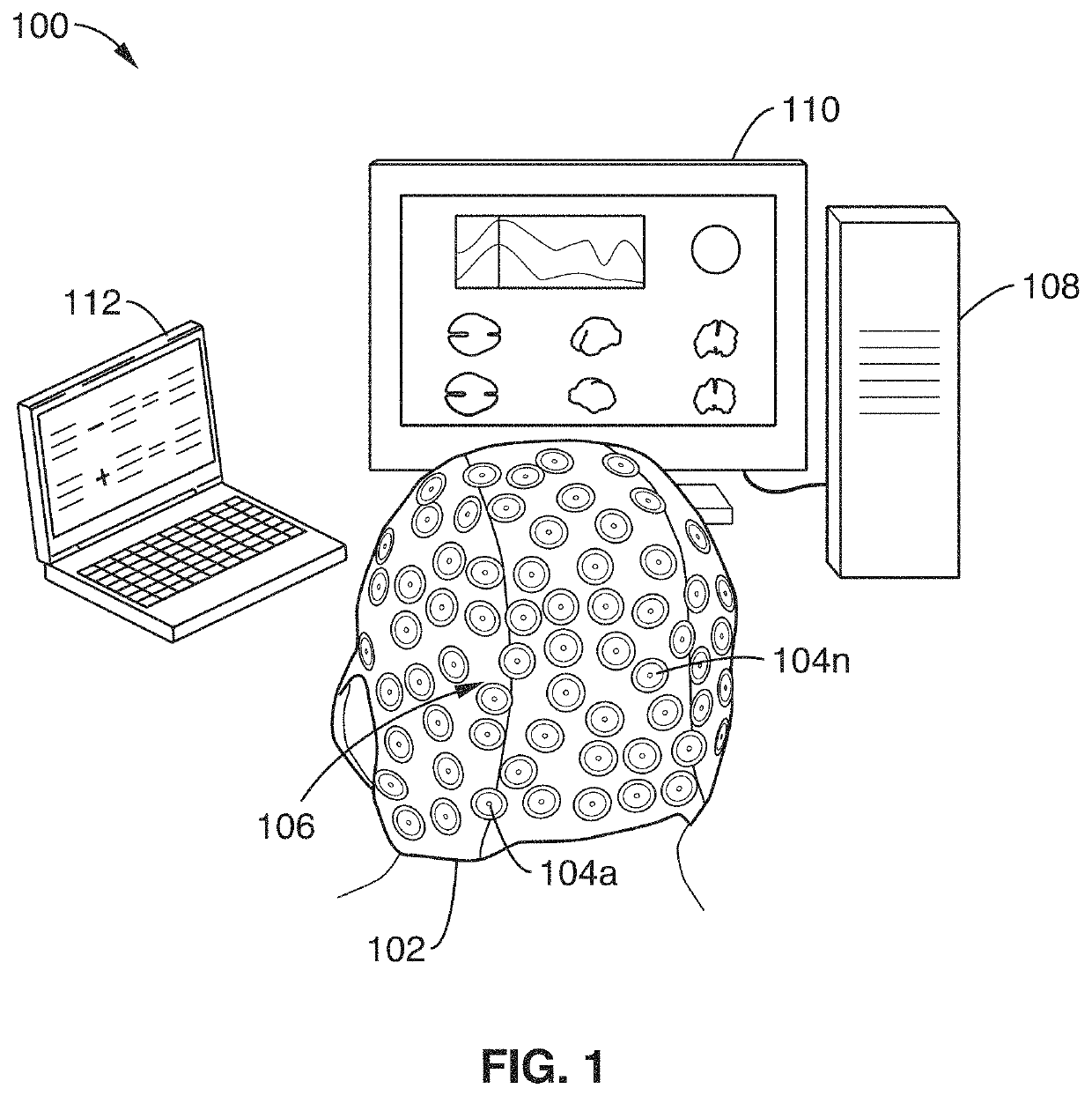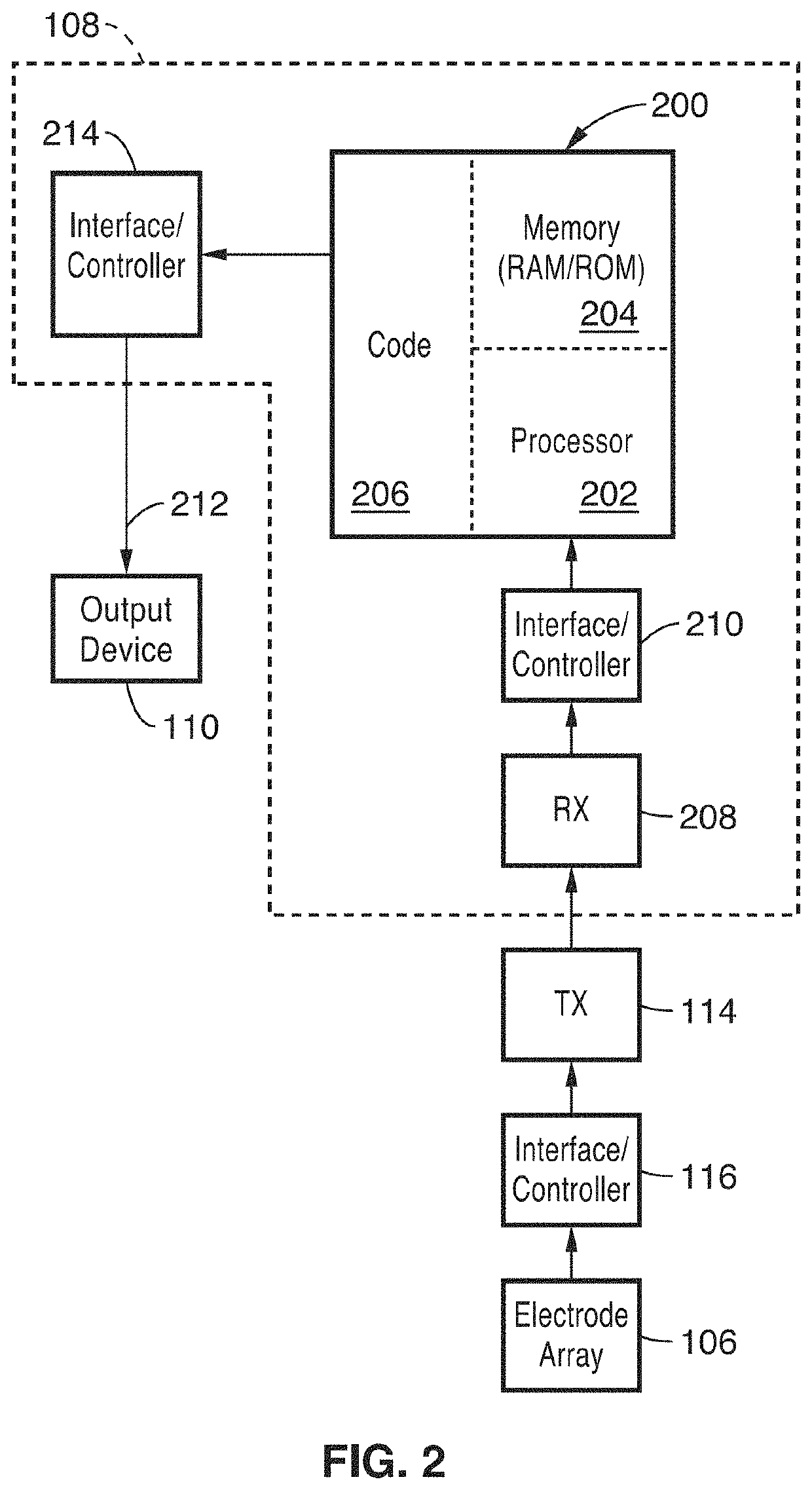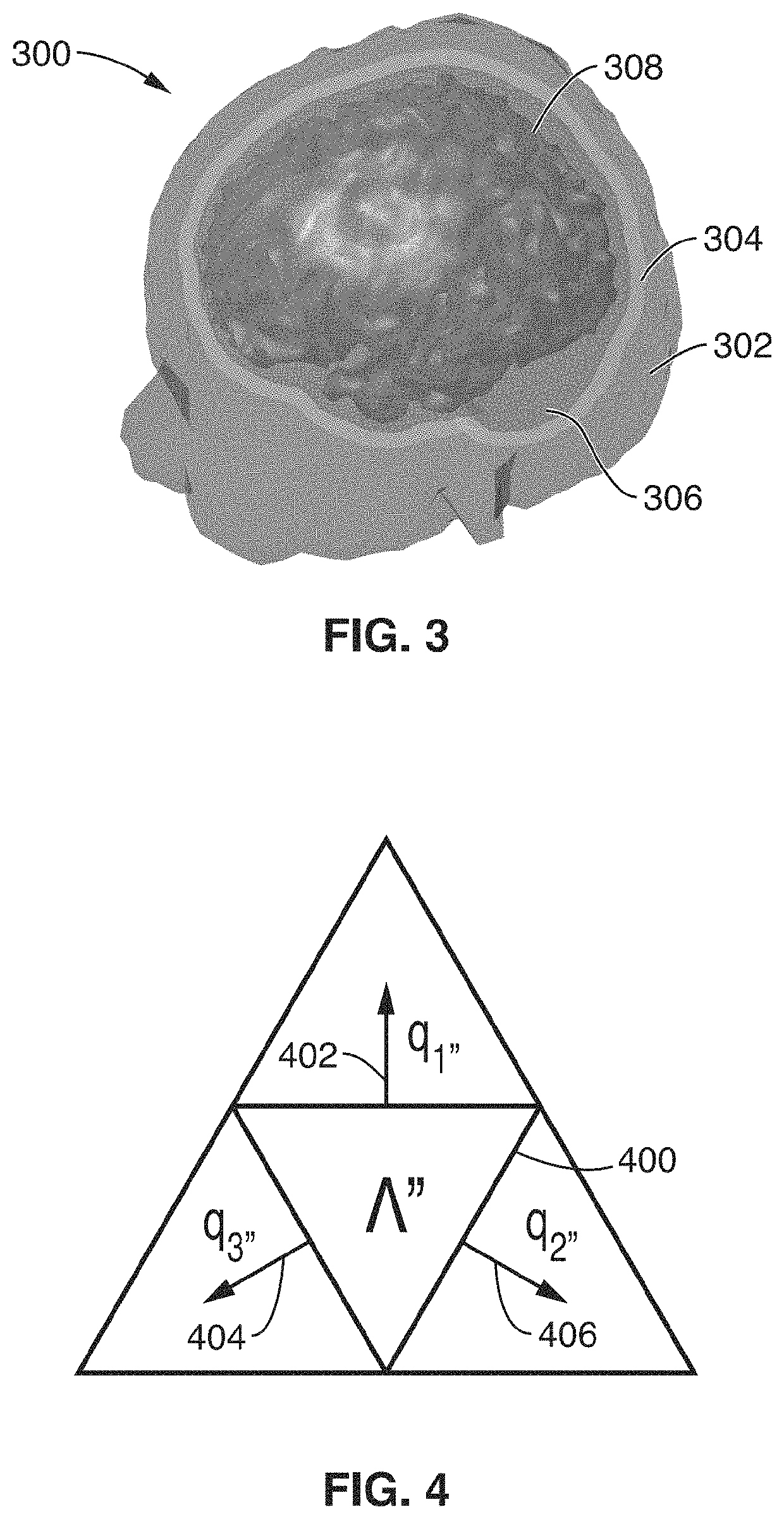Ultra-dense electrode-based brain imaging system
a brain imaging and ultra-dense electrode technology, applied in the field can solve the problems of low localization accuracy, undeveloped ultra-dense electrode arrays at a very large size that can cover a large portion of the whole head, and is not realistic in practical applications, so as to improve the spatial resolution and localization accuracy of reconstructed brain images, enhance sparsity and smoothness, and improve spatial resolution and localization accuracy
- Summary
- Abstract
- Description
- Claims
- Application Information
AI Technical Summary
Benefits of technology
Problems solved by technology
Method used
Image
Examples
Embodiment Construction
[0020]1. Hardware
[0021]FIG. 1 and FIG. 2 illustrate the functional components in a generalized embodiment of a brain imaging system according to the technology described herein. It will be appreciated that the embodiment shown may be modified or customized to enable performing the functions described herein.
[0022]As illustrated in FIG. 1, the system 100 includes a head-wearable cap 102 that supports a plurality of electrodes 104a through 104n arranged in a high-density array 106, a data acquisition and processing unit 108 that is configured to receive electrical signals from the electrode array and transform the electrical signals into images, and an output device 110 that is configured to display images generated by the data acquisition and processing unit. Optionally, a visual display 112 or other device can be provided to present visual stimulus to a person wearing the cap. When a visual stimulus is presented, electrical signals are captured by the electrode array in response to ...
PUM
 Login to View More
Login to View More Abstract
Description
Claims
Application Information
 Login to View More
Login to View More - R&D
- Intellectual Property
- Life Sciences
- Materials
- Tech Scout
- Unparalleled Data Quality
- Higher Quality Content
- 60% Fewer Hallucinations
Browse by: Latest US Patents, China's latest patents, Technical Efficacy Thesaurus, Application Domain, Technology Topic, Popular Technical Reports.
© 2025 PatSnap. All rights reserved.Legal|Privacy policy|Modern Slavery Act Transparency Statement|Sitemap|About US| Contact US: help@patsnap.com



